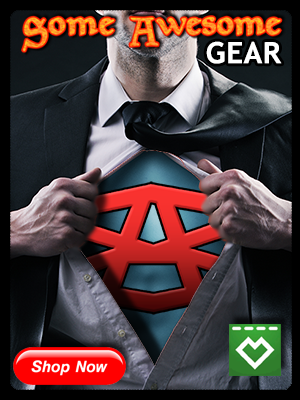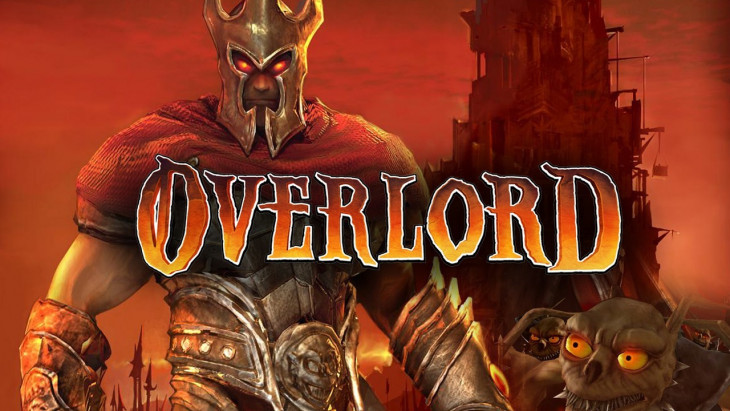
How I Discovered the Game
I came across Overlord while searching for games with a darker, more mischievous take on fantasy. I’ve always been drawn to titles that flip traditional tropes on their head, and Overlord seemed like a perfect fit: a game where you don’t play the noble hero, but the dark master commanding legions of unruly minions. It felt like a blend of Pikmin with the sarcastic tone of Dungeon Keeper, and once I saw gameplay footage of the player sending hordes of goblin-like creatures to wreak havoc across picturesque medieval towns, I was sold.
Introduction
Developed by Triumph Studios and published by Codemasters, Overlord is an action-adventure game released on PC in 2007. It puts players in the armored boots of a resurrected dark lord, fresh from the grave and ready to reclaim his throne. With the help of his loyal, chaotic minions, the Overlord seeks to bring destruction to a world once dominated by corrupted heroes. Combining real-time strategy elements, exploration, combat, and a wicked sense of humor, Overlord offers a refreshing twist on the classic good-vs-evil formula.
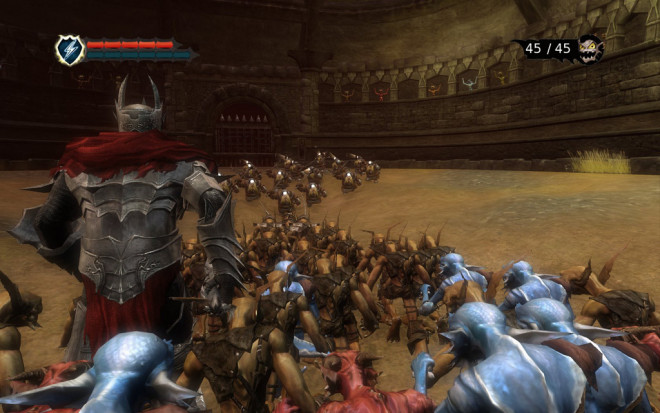
Story
While Overlord doesn't focus heavily on narrative depth, its story is filled with satire and dark humor. The world has been rid of evil—or so it seems. In truth, the once-heroic champions who vanquished the last Overlord have succumbed to greed, gluttony, envy, and other vices. You, the new Overlord, are thrust into a world begging to be "corrected" by your iron fist.
The plot unfolds as you confront each fallen hero in turn, bringing ruin to their lands with the help of your minions. There’s a loose overarching plot involving your mysterious past, betrayals within your ranks, and the true meaning of power. But the real fun lies in the absurd encounters and ridiculous caricatures of fantasy archetypes. It’s less about emotional resonance and more about reveling in gleeful villainy.
Gameplay
The core gameplay loop involves commanding different types of minions to fight enemies, solve puzzles, gather resources, and conquer areas. You control the Overlord directly, swinging your weapon or casting spells, but the real stars are your minions.
There are four types: Browns (basic fighters), Reds (ranged fire-throwers), Greens (stealth and poison), and Blues (healers and swimmers). Each has strengths and weaknesses, and the game does a great job gradually introducing them through level design.
The game mixes third-person action with light strategy. You’ll send your minions to attack, loot, carry items, and manipulate the environment. You can manually sweep them around with your mouse or right stick, allowing for creative and chaotic scenarios. Combat is satisfying but can become a bit repetitive without the minions, which is why the game smartly keeps the focus on them. Boss fights and larger skirmishes require more tactical thinking, positioning, and creative use of your minion squads.
Progression is tied to both upgrading your own armor and weaponry as well as enhancing your minions by sacrificing them in vats for better gear. There's also a morality system—will you be a tyrant who burns everything or a slightly more merciful dark ruler who only enslaves his subjects? It’s not deeply impactful in gameplay terms, but it adds flavor.
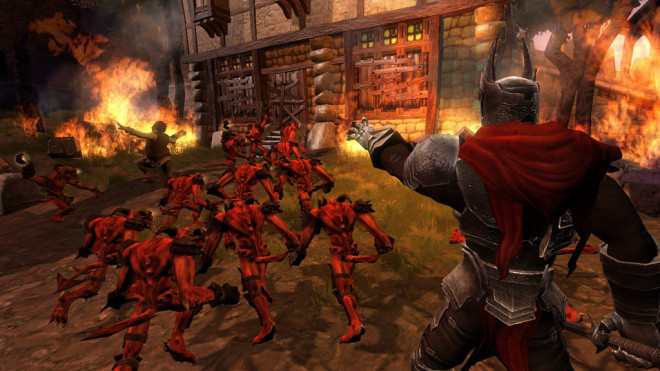
Graphics
For a 2007 title, Overlord has aged decently thanks to its art direction. The environments are colorful and cartoonishly exaggerated, reminiscent of a twisted fairy tale. The exaggerated animations and quirky designs of your minions give the game a lot of personality.
Character models are stylized rather than realistic, which helps maintain charm despite technical limitations. The visual contrast between lush villages and corrupted landscapes effectively mirrors your influence on the world. While it’s not a visual powerhouse, the game remains visually engaging through its atmosphere and design choices.
Sound & Music
The soundtrack does a great job capturing the mood of each zone—light and whimsical in some places, ominous and menacing in others. It supports the dark comedic tone without ever becoming too self-serious. The real standout, though, is the voice acting.
Your minions are constantly chattering in high-pitched gibberish, cheering, and chanting your name. Gnarl, your elderly advisor, is an absolute highlight with his sarcastic commentary and villainous exposition. The voice work elevates the humor and gives the game a strong sense of identity.
Sound effects—from clanging steel to the squelch of squashed sheep—are well-executed and contribute to the game’s chaotic vibe.
Controls
Controls are responsive once you get the hang of them. The Overlord moves with satisfying weight, and the minion sweeping mechanic, while awkward at first, becomes second nature. The ability to direct minions independently while fighting enemies or solving puzzles is one of the game’s best features.
Some camera issues can arise in tighter environments, especially when managing multiple groups, but overall, the control scheme is solid and supports the gameplay’s strategic demands.
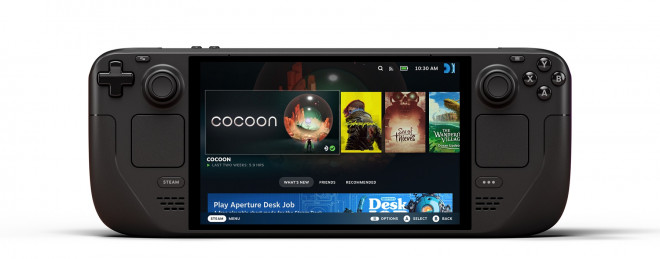
Steam Deck Performance
This section is important, as the Steam Deck Verified label isn't always reliable. Valve often verifies games with minimal testing, and many titles marked as Verified perform poorly in later stages, while others labeled Unsupported work flawlessly out of the box. Part of my role in reviewing games is to assess their genuine performance on the Deck and inform players of any community fixes or necessary tweaks.
In the case of Overlord, the game runs perfectly on Steam Deck. Despite its age, it holds a stable 60 FPS with default Proton, and no special tweaks are necessary. The controls feel good on the Deck’s gamepad layout, and the visuals, while dated, look crisp on the smaller screen. Load times are fast, and battery consumption is low, making it an ideal title for portable play. Audio works flawlessly, and no graphical bugs or crashes occurred during testing.
Conclusion
Overlord is a charming and wickedly fun action-strategy hybrid that lets you embrace your inner villain. With addictive minion mechanics, witty writing, and a world begging to be corrupted, it offers something refreshingly different in the fantasy genre. Whether you’re burning villages or stealing sheep, chaos has never been this delightful—and the game’s excellent performance on Steam Deck makes it all the more accessible for modern players.
Highly recommended for fans of dark humor, light strategy, and creative destruction.
AUTHOR INFORMATION

 A unique blend of action and RTS with satisfying minion mechanics. The core loop of exploring, looting, and corrupting the world is fun and addictively chaotic.
A unique blend of action and RTS with satisfying minion mechanics. The core loop of exploring, looting, and corrupting the world is fun and addictively chaotic.
 Stylized visuals hold up well thanks to strong art direction. Not technically impressive, but colorful and full of personality.
Stylized visuals hold up well thanks to strong art direction. Not technically impressive, but colorful and full of personality.
 Satirical and lighthearted, with exaggerated characters and a plot that pokes fun at fantasy conventions. Not emotionally deep, but highly entertaining.
Satirical and lighthearted, with exaggerated characters and a plot that pokes fun at fantasy conventions. Not emotionally deep, but highly entertaining.
 Charming soundtrack and outstanding voice work, especially from your advisor Gnarl and the energetic minions.
Charming soundtrack and outstanding voice work, especially from your advisor Gnarl and the energetic minions.
 Controls: Solid with occasional quirks. Minion control is intuitive and improves with practice.
Steam Deck: Flawless performance at 60 FPS with no need for community patches. A great match for portable gaming.
Controls: Solid with occasional quirks. Minion control is intuitive and improves with practice.
Steam Deck: Flawless performance at 60 FPS with no need for community patches. A great match for portable gaming.
PROS / CONS
- Unique and addictive minion-based gameplay
- Witty humor and memorable voice acting
- Engaging progression and upgrade systems
- Stylized visuals with personality
- Runs great on Steam Deck
- Occasional camera issues
- Combat without minions is underwhelming
- Story is light and more humorous than deep




